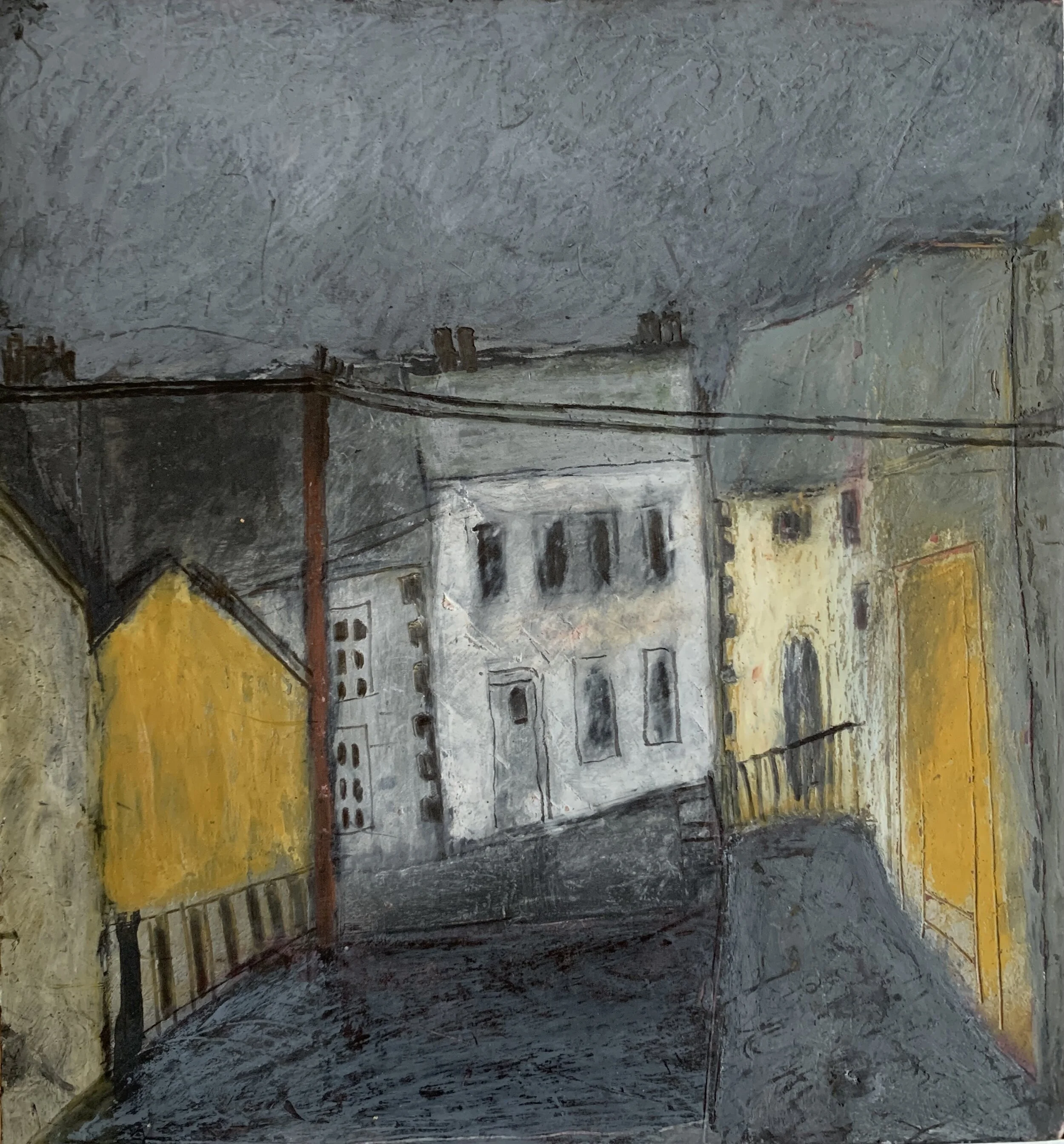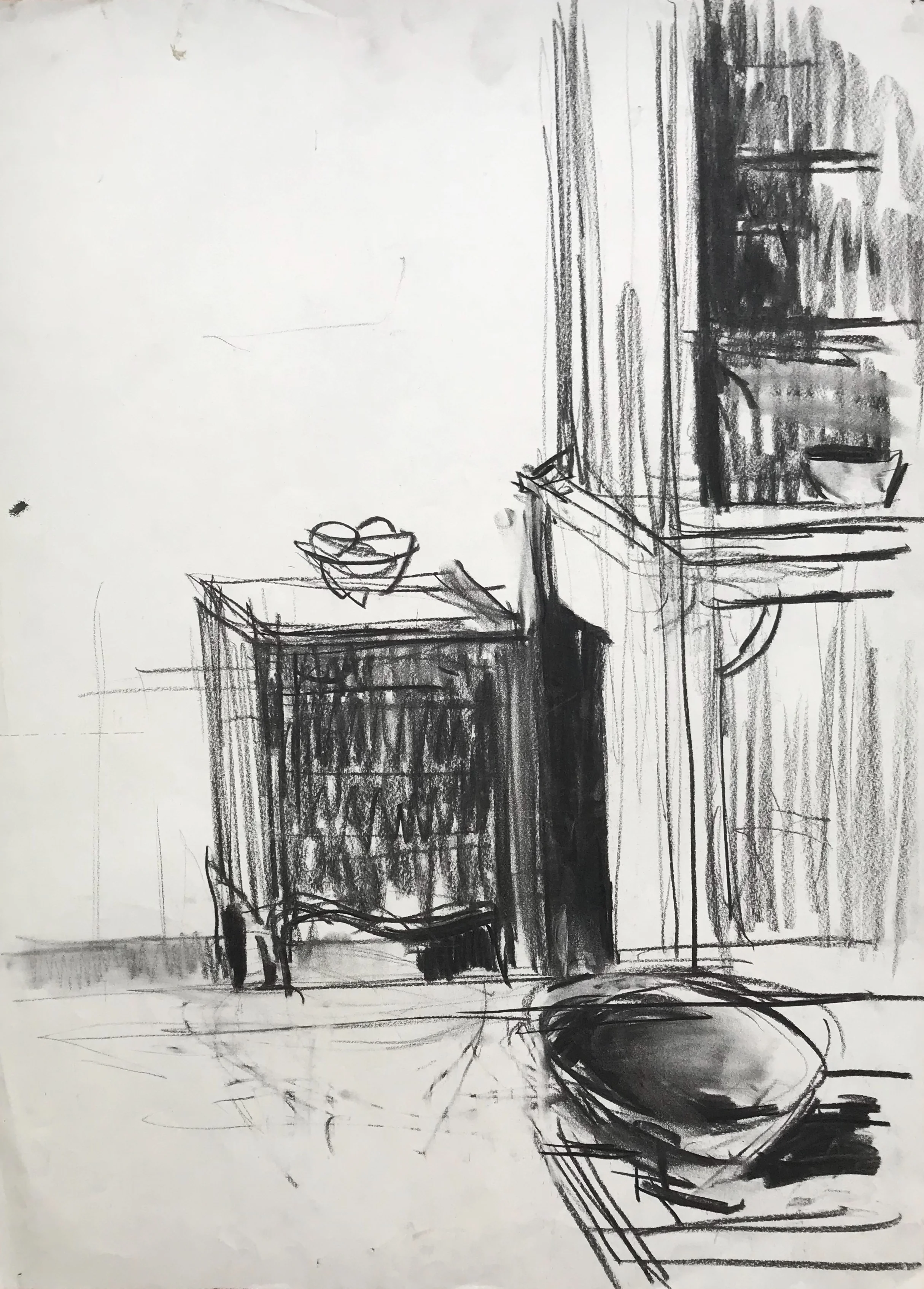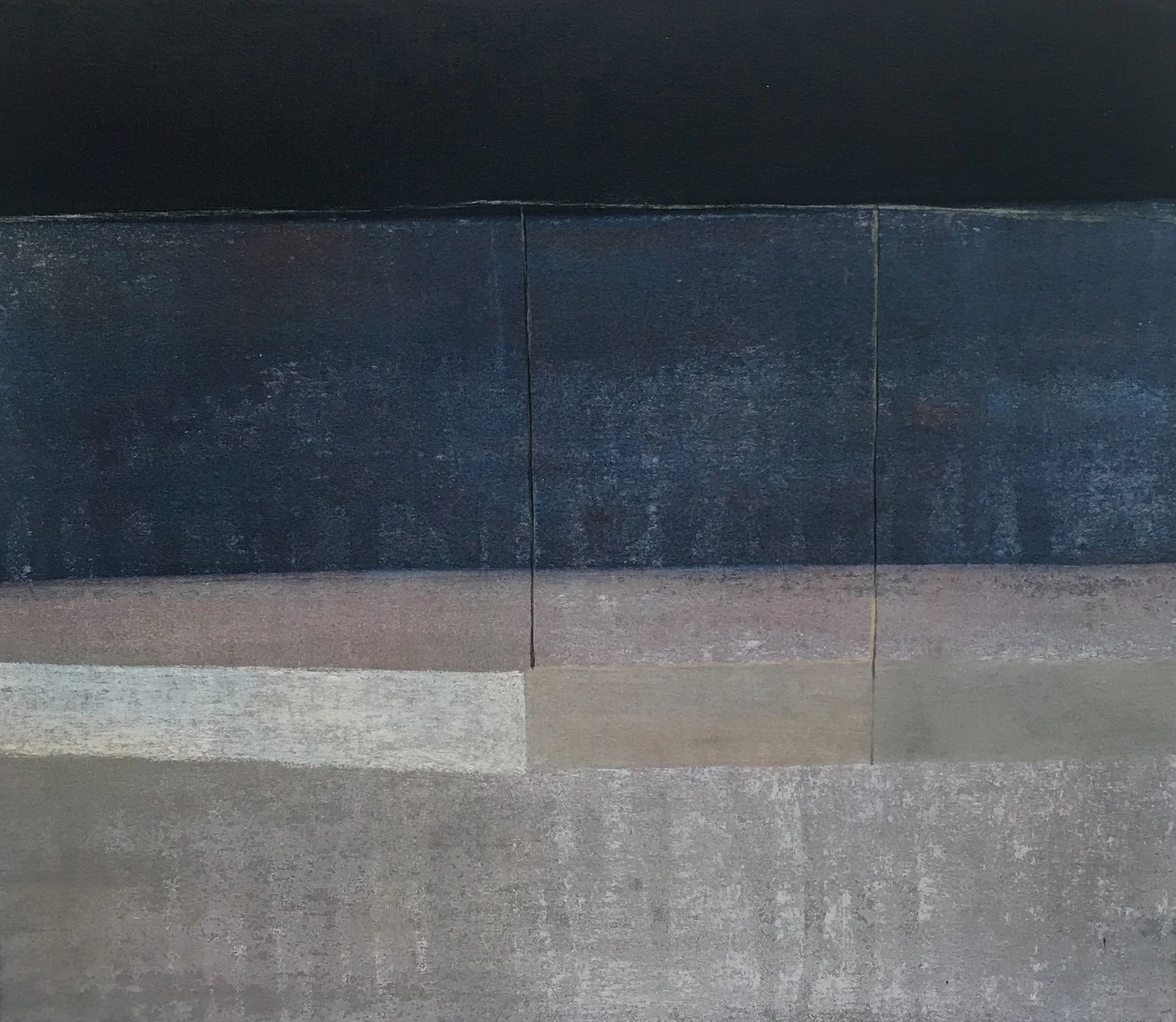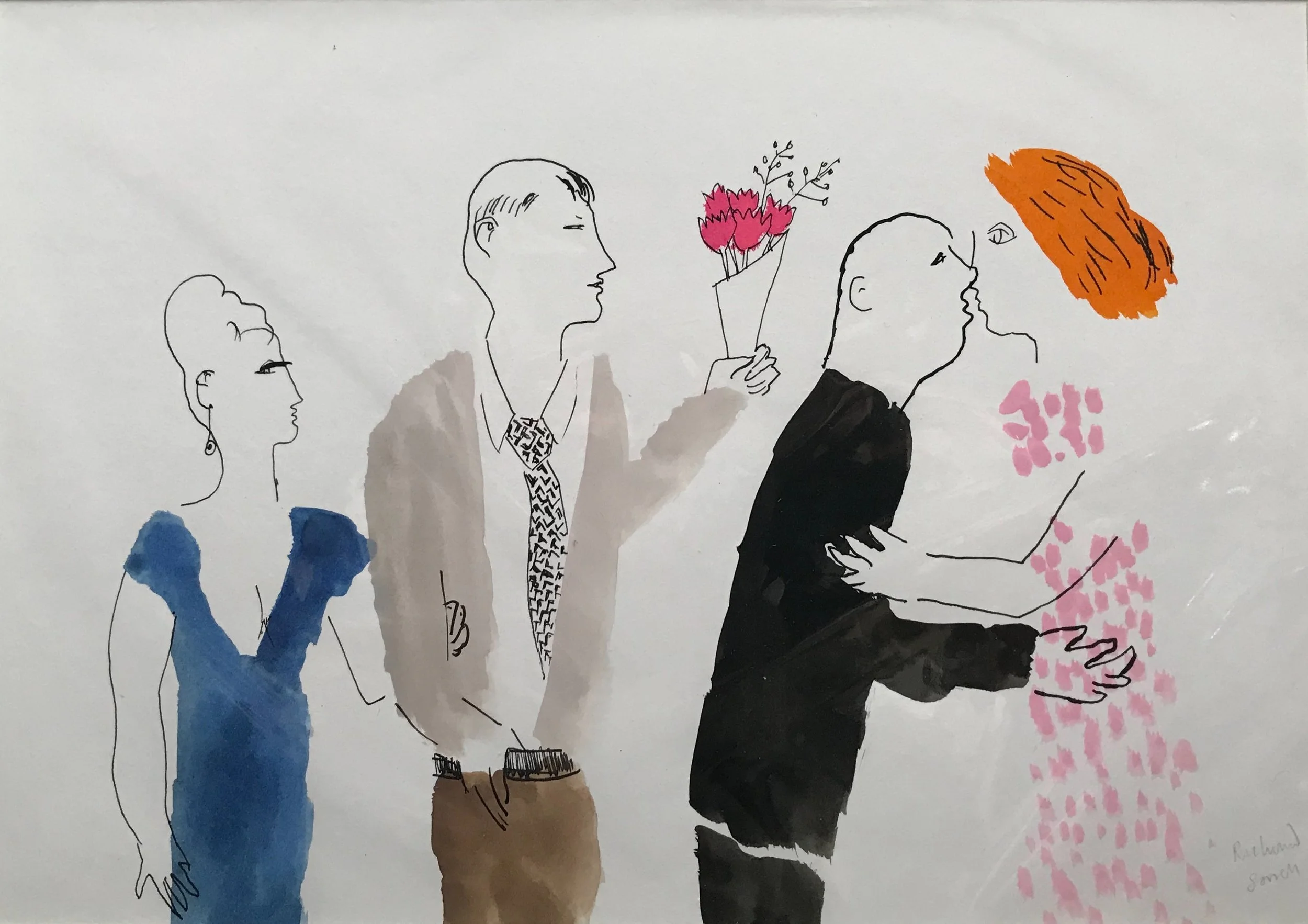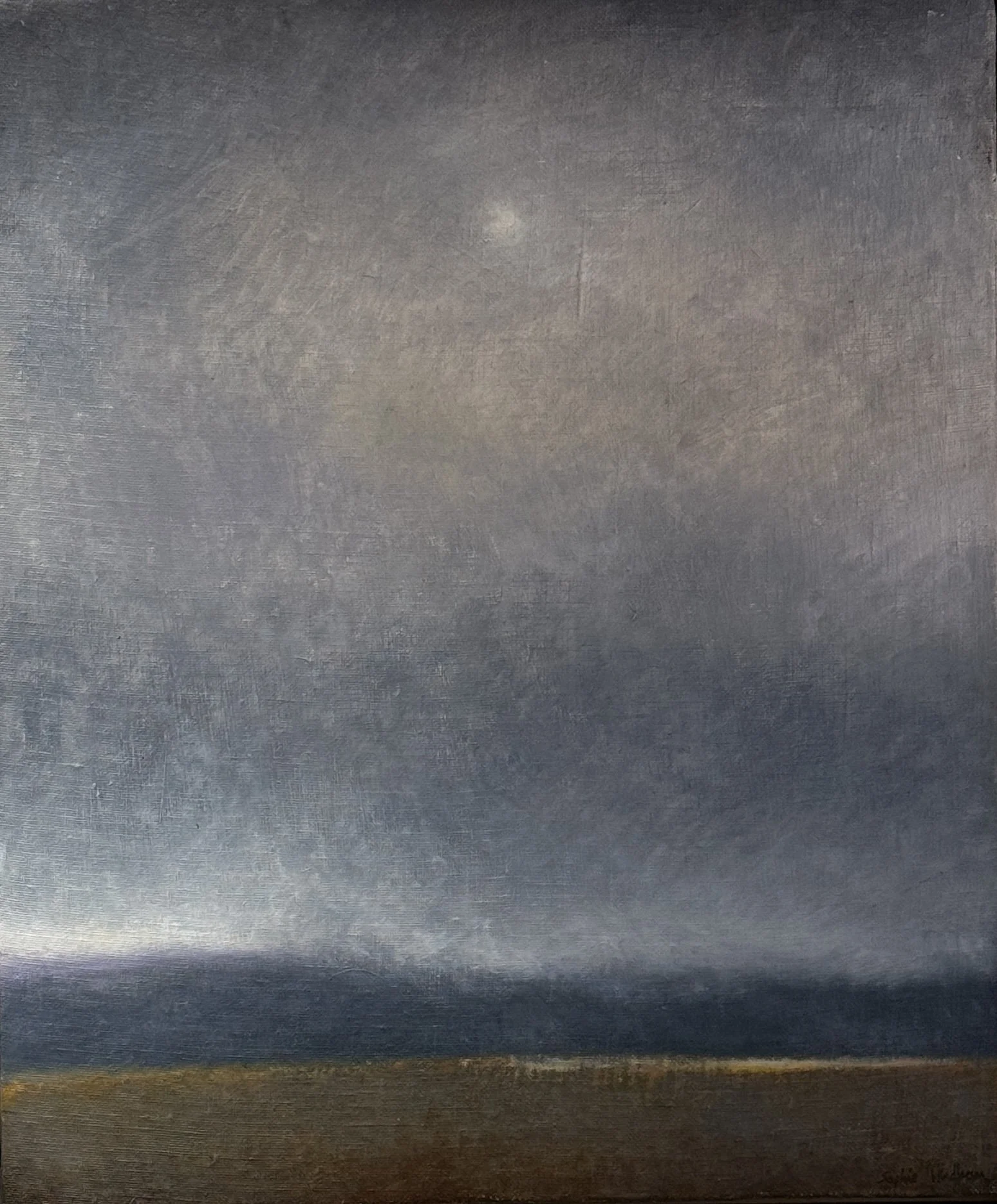Artists selling @ The Table
Welcome to my new online shop here at The Table where you will find works on paper by artists who exhibit regularly with me in the gallery. I wanted an online presence for gallery artists between their exhibitions but I also wanted to show drawings for you my buyers; these pages offer an eclectic mix but also a more affordable price point as they are all unframed making them much easier to send out to you. Click on any artist and see their curated gallery page … enjoy!
Julian Bailey
Julian’s recent work focuses on the contemporary figure, exploring the meeting up of grouped people in bar and café society. Painted with characteristically long limbs and angular torsos Julian’s economic use of paint brings out the essential relationships of youthful figures. He also enjoys painting figures, coastal landscapes and still life in his favourite haunts in Corfu and all over the West Country.
Julian works mainly in oil and gouache. He also makes smaller studies on his trips to London, Bath and the West Country with his conte pencils. On returning to the studio he will work these drawings up with gouache into smaller paintings. Some of these images Julian will turn into oil paintings in his studio. Julian has been painting almost every day for about thirty years now, and has developed a very concise style, characterised by his ‘drawing in paint’ approach. This leads to very clean and clear colour, painted with considerable impasto, but separated by scraped back patches. The scraping back allows each mark to ‘stand alone’ and the colour to sing out.
Sophie describes her work as ‘loosely impressionistic’, encompassing landscape, still life and figurative subjects as well as urban and industrial landscapes. She works in a variety of media often combined with collage – adding contrast and texture. Drawing on her strong visual memory, she introduces remembered colour combinations. Recently she has returned to working with oils and is excited by the possibilities this presents for the future.
Born in Hereford in 1946, Carolyn took up painting at the age of ten, at Saturday classes in the old College of Art in Hereford. She attended full-time at Hereford College of Art as a mature student, and then studied with Welsh artist Roger Cecil, who remained her mentor until his death in 2015.
Carolyn works at home in her studio amidst the gathered relics of flotsam & jetsam of her walks and travels. Her mainly abstract work is inspired by and concerned with landscape and the elements, geological faults, ley lines, chalk markings and ancient sites, always attempting to create connections between the organic, the archaeological and the spiritual. Paintings/drawings emerge through a process of layering paint and graphite, scratching and sanding until the traces of time and memory are transformed into a rich and resonant image.
Helen won the prestigious Pollock Krasner award for painting in 2012 and has exhibited internationally. She studied painting at Wimbledon School of Art graduating in 1989 and she moved to Wales in 1996.
She creates abstracts that are often monochromatic on both the small and large scale. She has a very emotional and intuitive response to her chosen materials, the sticky viscosity and watery oils vying for attention as she strives to capture Beauty.
Kate is inspired by the landscape of the Welsh borders where she lives. Her paintings do not set out to be precise representations, but a response to the changing rhythm and colours of the landscape.
Kate draws outside with charcoal, pencil and pastel, then back in the studio, she paints in oils, sometimes adding blocks of flat colour collage or newsprint to a composition. She also paints still life and flowers from her garden.
Before becoming a full time painter Kate was a journalist and worked on Vogue before moving to Wales after her marriage. Gradually the painting became all-consuming and she began selling her work in the gallery on Tresco where the family went every summer with their 3 children .
“I’ve lived in mid Wales for over 35 years and know the surroundings seep into my subconscious when I paint. There seems to be a deep-rooted composition in my memory that invariably emerges in a painting. I often walk to a favourite place to revisit a group of buildings or the steep dip of skyline over the hills; I unashamedly edit the view to make a picture work, taking out anything that confuses the composition. I love emptiness in a landscape, where the space is dissected by a grid of hedges or vertical marks of buildings, telegraph poles, church spires.”
Lois studied Fine Art at The University of Newcastle Upon Tyne 1982 - 86 winning the South West Open Young Artists Award in 1986. She then went out to work for twenty years beginning with Textile Conservation at Hampton Court Palace and ending up on the set of a Harry Potter film. She gained an MA in Screen Design from the NFTS in 2002.
Since moving to Wales she has settled in Knucklas with her partner the potter, Tony Hall, and their twins, where they have established Castle Hill Arts and run a small flock of sheep.
"I love sketching and turn the small pen drawings that I make on walks into big landscape works. Small images are projected onto paper, ply and gesso and worked up into painted drawings in the studio. The landscape, the hill farms, the odd geometry of the shapes of fields and the weather all inform the paintings which I make in the studio".
In 2010 Lois won the ING Drawing prize at the Mall Galleries.
Charles trained at Camberwell School of Arts and Crafts (Dip. AD) and Brighton Polytechnic (Art Teachers' Certificate). After a period of teaching and working as an auxiliary nurse, he was awarded a major bursary by Southern Arts which enabled him to paint full time.
Initially painting landscape, he gradually abandoned this in order to paint more intimate subjects in a domestic setting. Through still lifes and interiors he tries to evoke in paint both the objects and the atmosphere of his everyday surroundings. Working slowly with muted tones and simplified compositions, stillness and calm predominate.
In 1986 he moved to Herefordshire where as well as exhibiting regularly he has curated a number of religiously themed exhibitions. He also exhibits in London with the Piers Feetham Gallery. In 2015 he was given a solo exhibition in Louisville, Kentucky as part of the Thomas Merton centenary celebrations.
Born in Glasgow, Stewart graduated in 1977 from Glasgow School of Art in sculpture.
He studied for an MA in European Fine Art in the Barcelona Studios of the Winchester School of Art graduating in 1994.
He lives and works in Hay.
“Some time ago I read the poet Kathleen Jamie’s book “Sightlines” in which she describes sitting on a Greenland shore and experiencing what she described as a “radiant silence”. I found that this phrase perfectly encapsulated the quality I had been pursuing in my work and which I have continued to pursue in the work you see here.”
from the writings of TONY BIRKS HAY (1973 - 2014)
“Bill Mills was a big man. He gave the impression of strength and power. He lived life to the full, and left behind, at his death in 1997, a great body of vigorous work.
Nothing in his art was weak or mean. Every piece of work I have ever seen by Bill Mills, from the largest towering canvas to the simplest Hiltonesque linear cartoon, has a strength and spirit, showing a love of life inspirational to colleagues and pupils. He should take his place amongst the best British expressive painters of the 20th Century, like Frank Auerbach, Ivon Hitchens, Patrick Heron and Roger Hilton.
His work is on a main artery of modern painting, an artery which maintains the brain-hand-eye connection missing in so much conceptual art.
Born in Portsmouth ...(he) went in 1945 to Goldsmiths College in London, and studied painting there with colleagues such as Brigit Riley and Albert Irvin. He was part of an iconoclastic cell, and must have been aware of David Bomberg’s teaching at the nearby Borough Polytechnic, asBomberg was an important influence on his work.
He lived a full and furious life, but he shunned the artistic establishment, and ploughed his own furrow. He had no time for artists who painted with an eye to preferment or who chased fashionable trends. He was too busy struggling with the old problem: painting itself.
Bill Mills skill as a draughtsman was considerable. Economical line drawings of the nude and atmospheric charcoal drawings of rocks and trees and landscapes are a formidable legacy in themselves. But it was painting that he regarded as the highest art form. He could and would talk about painting as no one else did, with a sureness of view, but no arrogance or conceit.
He wrote: “One has to burrow underneath appearances...I prefer artists that move paint about in an organic fashion... artists like Bomberg, Manet, Titian, Turner, Auerbach, Rembrandt.” He certainly did this himself.
Though his work was widely exhibited, with twelve one-man shows in the 1990s, and is now disseminated in private collections, he still waits for his reputation to rise, and to take his due place in twentieth-century British art.”
extracts taken from the catalogue for a Commemorative Exhibition 10 June – 30 July 2000 Brecknock Museum & Art Gallery, Powys, Wales& William Mills’ Obituary: The Guardian 1997
Emma’s lifelong passion for papier mâché began on the Fine Art course at Newcastle-upon-Tyne University in 1989. Here, she discovered the innate, versatile qualities of a recycled material that afforded her to sculpt freely. She went on to use it in conservation projects, developing an understanding of its history.
Its substance emanates finesse and simplicity, although composed of modest materials – yet with complex treatment it can be taken to the other extreme, when it is rendered strong but lightweight. It is a medium of subtle and surprising contradictions.
Nowadays, something made from papier mâché is presumed to be non-precious and possibly unrefined or artless. Emma is drawn to this commonplace medium for that very reason – the notion that the familiar, freely accessible things which we use, or which we do, on a daily basis are as notable and meaningful as the rare and extraordinary.
Placing more value on the fragile aspect of paper, she uses it considerately, in its simplest form, using only plant-based materials. This has opened up a reflection on our unique rhythms, the cycles of our days and changing seasons, with intention on listening to our natural environment and the need to tread lightly.
Emma has a studio practice on the edge of the Mendips, near Frome in Somerset. Her work is represented throughout the UK and Ireland.
Richard is a painter of invented figurative paintings - ‘people doing things’. His distinctive pictures are reinventions of reality, based on a lifetime of drawing and painting and looking at life. For some years he worked mainly as a landscape, portrait and still life painter, and as a painter of aerial views, mainly of grand houses.
He was President of the Royal Watercolour Society from 2006-9, and is also a member of the New English Art Club, the Royal Society of British Artists and the Art Workers Guild. He has had many solo and group shows in Britain and the USA. His work is represented in the V&A Museum, Museum of London and the collection of the National Trust and in many private collections.
Richard lives with his wife Sue in the far west of Cornwall.
"My subject matter is wide-ranging, sometimes becoming abstract or semi abstract, always built on drawing and often memory. I just enjoy the conversation and the struggle with whatever medium I have chosen. I never have an end in mind, I just stop when the work feels right."
Anthea trained at the Ruskin School of Drawing at Oxford University and for 25 years taught art at Harrow School.
Peter's work is concerned primarily with the natural world, embracing its history and precarious future, as well as man's place in that world. Though a full time teacher of English and Classics at Harrow School (1971-2004 ) he has always drawn and painted and began contributing to mixed shows, notably at the New Grafton Gallery and The Bloomsbury Workshop in London, in the 1990s. Since 2003 he has shown mainly with Abbott and Holder Ltd, London.
Sophie Windham was brought up in the bucolic Gloucestershire countryside which has inspired her lifelong love of nature. She grew up in a family of artists with her mother, Annette de Mestre, and her aunt, the painter Rachel Windham who were both fundamental to her development as an artist. After training in London at Byam Shaw and Chelsea School of Art she worked for twenty years as a children’s book illustrator being nominated in 1997 for a ‘Greenaway Medal’.
During her early years Sophie travelled extensively, living and working in Venezuela and Los Angeles, but in 1994 she moved to the Welsh borders with her family and for the last decade she has been painting and exhibiting her work in Hay-on-Wye and London.
Sophie has work in private collections in America, Australia, Venezuela and Europe.
Moving from illustration to painting has been an important transition for me. Living just below the Black Mountains I feel a part of the land around me and I am absorbed into it. I use memories and photographs that I collect while walking in the hills. I paint straight onto the canvas, it’s not conscious, it just happens. Most of my paintings are worked on for months, two or three at a time, and there are many layers underneath the finished painting. I begin with the details and then gradually strip down the piece until I’m satisfied, leaving the essence of the landscape and allowing the viewer space for their own response.


